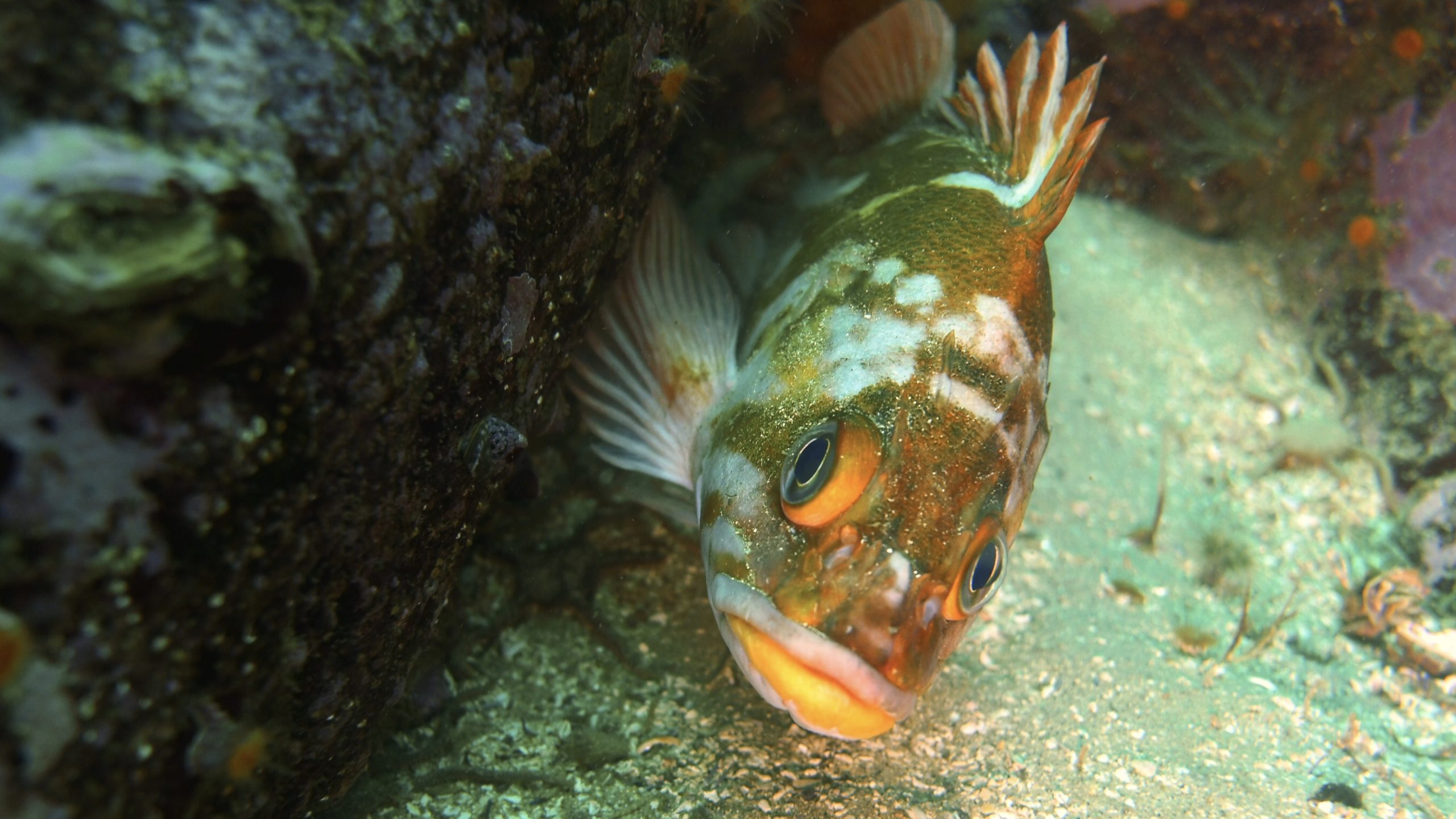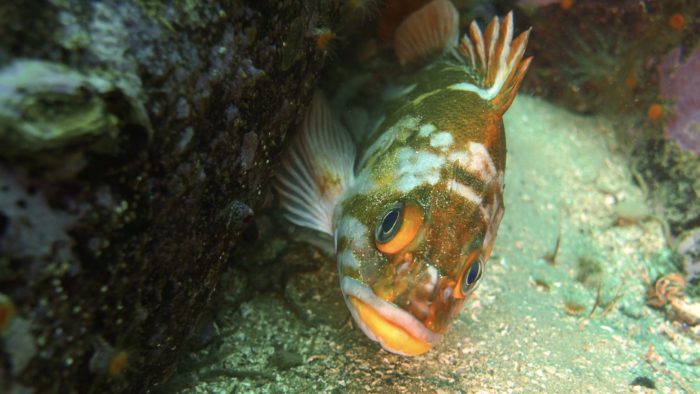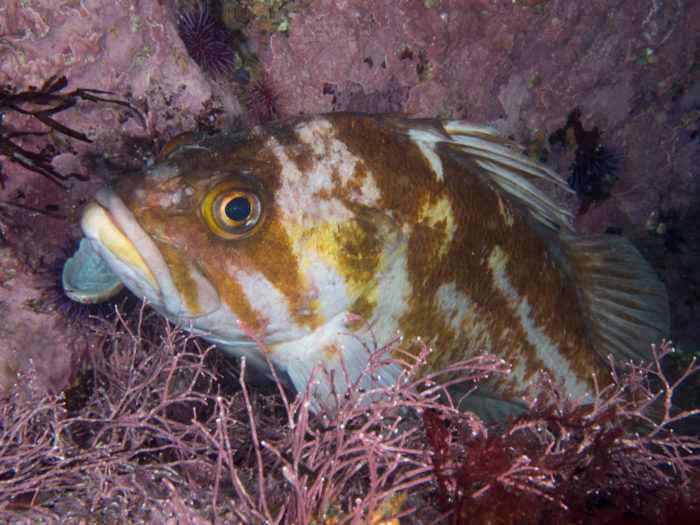
Sea Wonder: Copper Rockfish

Photo credit: Megan Crabtree
The copper rockfish (Sebastes caurinus) is also known as the copper seaperch. It is a species of marine fish and part of the rockfish family, which are characterized by their ray-like fins.
Description
Copper rockfish are striking fish that appear in a wide variety of patterns and colors, from dark brown or olive to pink or orange-red, sometimes with copper-pink or yellow patches atop their bodies. Their bellies are almost always a whitish hue. They have a copper-orange streak that radiates from the back of their eyes toward their tails, and their cheeks are often a yellowish color. They often have a wide, pale stripe running along the rear two-thirds of their lateral line. There is also a prominent dark band going from the eye to the pectoral fin, and a second band below it.
Copper rockfish have deep, stout bodies, can reach lengths of a little more than two feet long, and weigh as much as 10 pounds when they are fully grown. Their fins are fan-like and can appear sharp at their ends, especially the dorsal and pectoral fins.
Diet & Habitat
Copper rockfish are bottom feeders whose diet primarily consists of smaller fishes, crustaceans, squid, and octopus. They are opportunistic feeders that use a wide range of foraging strategies to secure their prey, all of which depend on their local environmental conditions.
Copper rockfish span North America’s Pacific coast from southeast Alaska to Baja California in Mexico. They are the most abundant and common between British Columbia in Canada and southern California. They live in nearshore rocky environments and among kelp forests and generally stay close to the seafloor. Juveniles spend most of their time hidden among sea grasses and kelp while adults seem to prefer deeper waters, typically on sandy bottoms near patches of rock or along rocky drop offs. Occasionally, copper rockfish will co-habitate with Giant Pacific Octopus in their dens.
Life History
Like other rockfish, copper rockfish are viviparous reproducers, which means the fertilization of eggs, hatching, and the development of embryos takes place within the mother’s womb. The mother provides some nutrients to the developing young. When they are fully developed, females give birth to live larval fish. Spawning occurs between January and April, usually peaking in February. Copper rockfish tend to lead solitary lives, living near other individuals and aggregating for feeding and spawning purposes. These fish can live to be around 30 years or older, with the oldest documented individual thought to be around 55 years old!
Threats & Conservation
Copper rockfishes are fished recreationally and commercially and are co-managed in the United States to ensure the fishery’s sustainable future. Agencies involved in the management of groundfish like the copper rockfish include NOAA Fisheries, the states of California, Oregon, and Washington, and the Pacific Fishery Management Council. These bodies determine commercial and recreational fishing seasons and catch limits and monitor population health to make informed decisions on an annual basis. Regulations vary by geographic area, season, and fishing type.
Other pressures facing copper rockfish populations include the effects of climate change and ocean acidification as well as coastal development and pollution. Specific challenges to the species’ survival include decreased prey availability, decreased oxygen levels in the ocean, loss of nearshore habitat, warmer and more acidic waters, and both physical and chemical pollution. Since the species is long-lived and reproduces more slowly than other fish species, replacement rates are lower for this species, which means recovery is harder if the population declines even slightly.

Photo credit: alwayslaurennj
